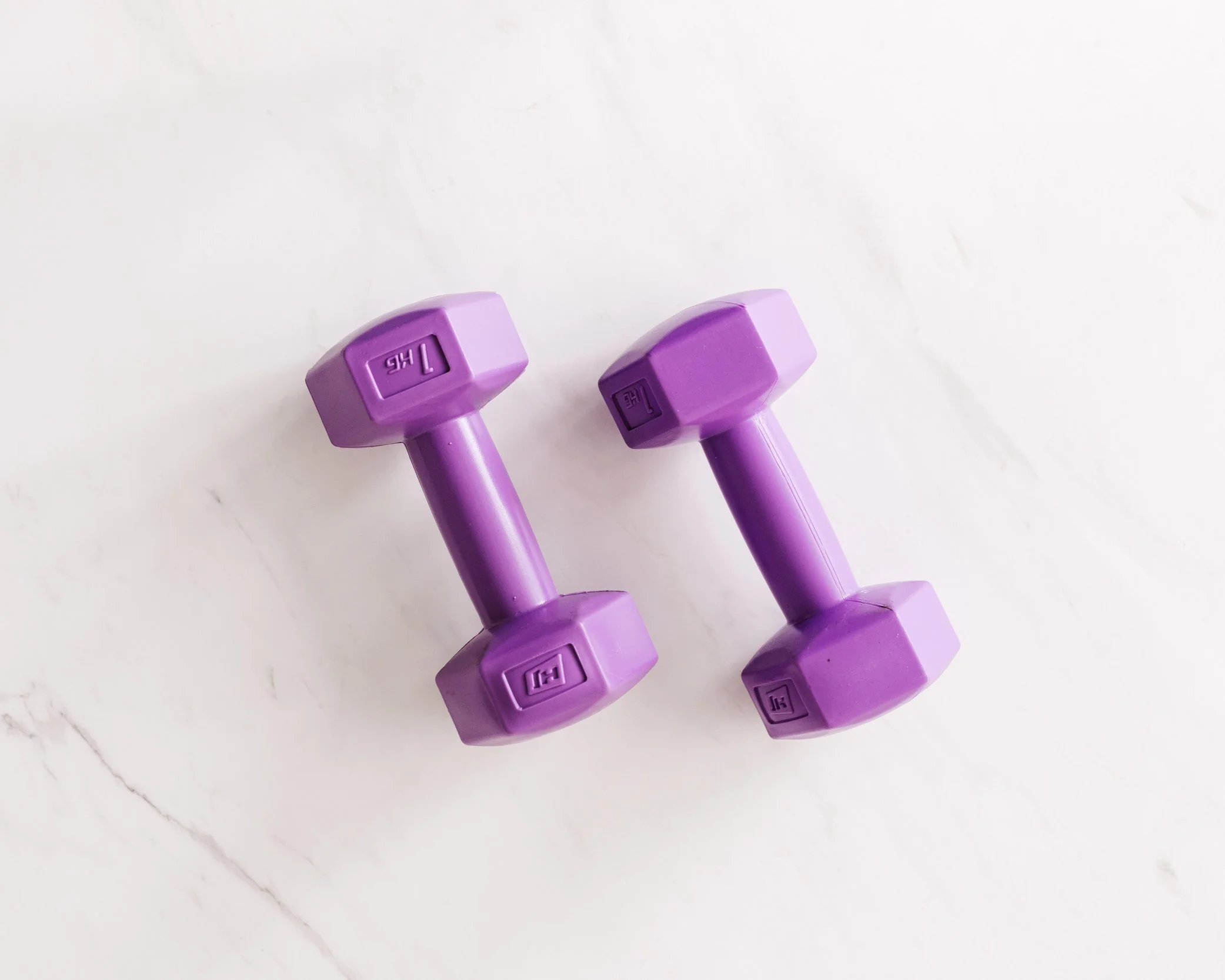6 Weight Training Tips for Beginners
When people ask me what the benefits of strength training are I usually lead with these three facts:
It increases bone density.
It helps increase metabolism.
EPOC. After cardiovascular exercise or weight training, the body continues to need oxygen at a higher rate than before the exercise began. This sustained oxygen consumption is known as excess post-exercise oxygen consumption AKA EPOC.
The benefits go beyond that though. Strength training is an incredible way to lose weight, build muscle, reduce the risk of injury and improve posture. If you're new to the scene of lifting, it can also be a daunting and intimidating undertaking, specifically knowing where and how to start.
Here’s the thing, I've been there too and I want you to know that you’re not alone.
I share my top six tips you should consider before jumping into strength training as a newbie.
1. You can’t master weight until you master your body weight
Until you are comfortable doing exercises with just your body weight, you should hold off on adding weight to your movement patterns. Start with basic body weight squats, lunges, pushups, and planks before thinking about adding weight to the mix.
Form is the most important thing you need to master and making sure you develop a strong mind/body connection is vital. Synching your movement with your breath is key. Making sure the exercise form is correct is imperative before holding any kind of weights.
Take your time during this process and do your research or consider hiring a coach. Adding dysfunction to function is a recipe for disaster and will cause injuries down the line.
Consider this body weight circuit to try it below.
2. Be Consistent!
Consistency in your routine means scalability. Staying consistent is key in making improvements and to also measure progress. Being able to track your progress on a week to week basis will ensure that you are gaining momentum and making progressions in strength and form every week. Consistency is key especially when it comes to a weight loss or muscle gaining goal.
3. Stick to a progressive strength training program
Progressive overload is when you gradually increase your muscle mass through repetitions, weight, or frequency. The goal is to get stronger by increasing at least one of these variables week to week. Following a progressive strength training program is necessary if you’re looking to get stronger or lose body fat. The body adapts quickly and it is very good at adapting.
Making sure something is changing up in your program (whether that be weight, reps, rest time or pairings of exercise) is vital if you're looking to make long lasting changes and results.
If you need a progressive strength training program, check out my beginners SHRED program HERE.
4. Challenge yourself
If something is too easy, you should be willing to increase the difficulty level by doing one of the following:
Increase weight
Increase reps
Decrease rest time
Add an “active rest”
Change pairings of exercise
It will be difficult in the beginning, yes, sometimes very difficult, but I promise it does get easier. Start slow and pace yourself. Learn the mechanics right and tune into your body and breathe.
5. Warm up!
It’s important to warm up properly before jumping into any exercise. A quick warmup is necessary to prepare your muscles and joints for the workout ahead so that they’re limber and less susceptible to injury.
Warming up also helps increase blood flow to your working muscles and gradually increases your body temperature in preparation for harder work.
There are many ways you can warm up before a workout but I suggest a dynamic warm up like THIS one below.
6. Take Rest days!
Rest days are a key component of any workout schedule and are essential for promoting muscle recovery and reducing the risk of getting hurt. I say it to all my clients all the time: rest days are essential to making progress in the gym! You shouldn’t feel guilty about taking rest days.
When starting a weightlifting program try taking at least 2 days off each week. Each muscle group needs 48 to 72 hours to recover before performing the next workout. This is why it’s a good idea to do split workouts in the beginning..
Mastering these basics in the beginning will go a very long way.
If you need help, feel free to reach out to me and schedule your free strategy call today! I got your back and we can tackle your fitness goals together.

